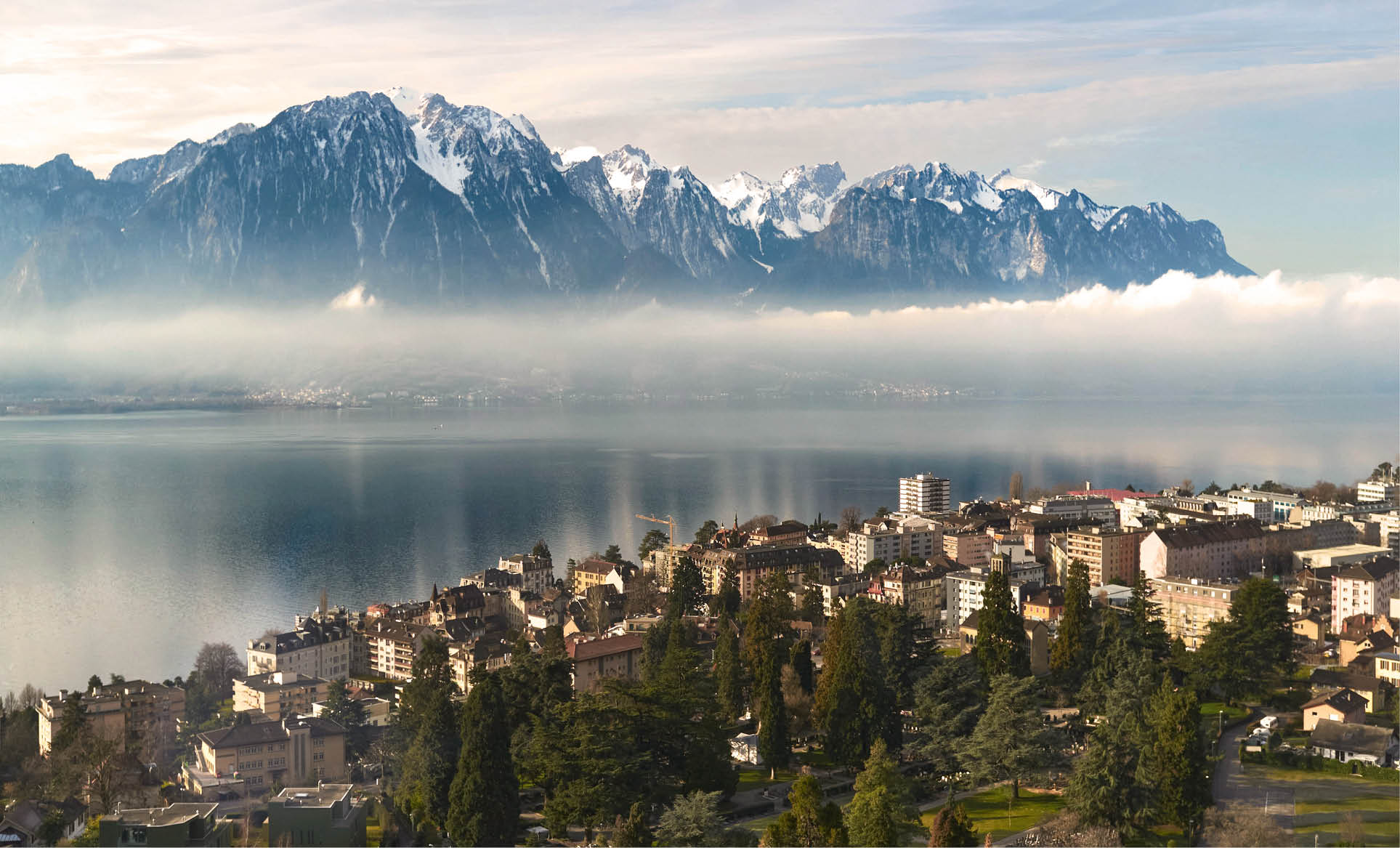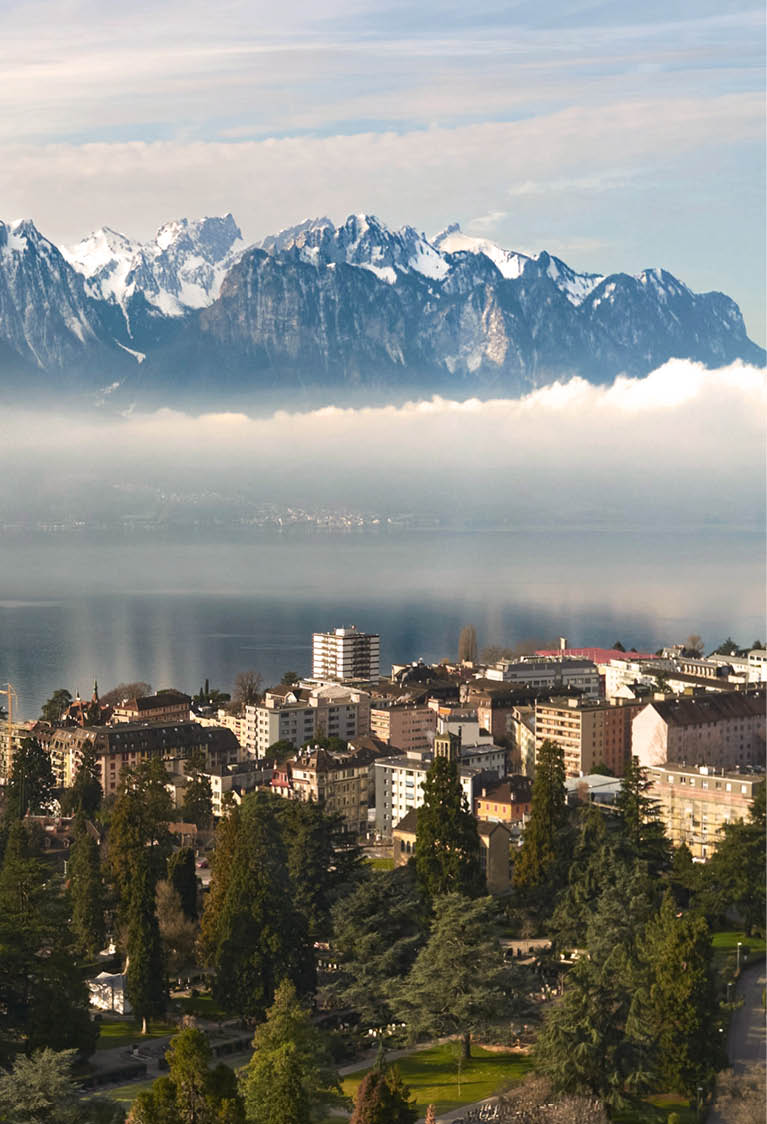


A BBA dissertation by student Selina Groflin gave Senior Lecturer Dr. Francesco Screti the chance to bring an important sustainability issue to wider attention.
The more photogenic Practical Arts semester, and globetrotting internship experiences, can sometimes overshadow the serious academic study that also comes with a Glion Bachelor’s degree.
These studies culminate in either a dissertation or an applied business project. Student Selina Groflin opted for a dissertation, choosing a serious topic to research: overtourism in the Swiss Alps.
Selina’s work fueled the fire of her dissertation tutor, Senior Lecturer Dr. Francesco Screti, to bring this hot topic to wider attention. Francesco used Selina’s research findings to create a paper that was published by the Université de Fribourg, while also making an appearance on Rhone FM radio and being interviewed by the regional newspaper La Gruyère.
What is overtourism?
Overtourism is a term that describes a situation where a place attracts too many travelers for sustainable management to be possible.
According to research, in 2010 Switzerland was in a phase of ‘pre-overtourism’, with isolated spots still possible to find in alpine areas. However, today’s numbers tell a different story. For example, in 2017 Switzerland received 11.1 million tourists according to the UNTWO. On a tourist-per-inhabitant basis (of 1.3), this put the country on a similar footing to France – the world’s number one destination for international tourists.
Drill down from the big numbers and it’s not hard to find impacts from this phenomenon at ground level. For example, in August 2018, the owners of the Aescher inn (Appenzell), the most famous Swiss mountain restaurant, had to give up the business. Since the restaurant was featured on the cover of a National Geographic book in 2015, tourists have flocked to it more and more – to an extent that became unbearable.
Francesco Screti takes up the story. He explains, “Three points should be noted. First, overtourism in isolated areas is often underestimated, until it becomes evident; second, media and social networks play a fundamental role in tourist flows; and third, mountain areas are experiencing a paradox: the more isolated they are, the more tourists they attract.”
For ‘underestimated damage’, Francesco points to the recent development of natural and escape tourism, which has seen remote areas are targeted by an increasing number of travellers for their natural beauty and remoteness.
“Isolated places are attractive because they offer unique experiences. Unfortunately, under the guise of ‘sustainable tourism’, overtourism is taking hold in such an insidious way that the damage can be very profound. Research shows that until the phenomenon is fully visible, little preventative action is taken,” he says.
The impact of media and social networks is profound, especially when combined with the fashion towards seeking out remote destinations that can generate ‘likes’ on Instagram.
Francesco adds, “Photos and videos from social networks continuously display the tranquillity and natural beauty of a destination. Bucket lists with ‘must see’ places are particularly perverse, as they give potential visitors the impression that they will be missing out on an experience if they do not visit them.
“With the current trend towards remote destinations, protected areas attract many visitors with their promises of unspoiled nature, unique and idyllic experience in a secluded location.”
Last but not least, there is the paradox of tourism in isolated regions. “We live in a very built-up world; and to escape this we seek wild nature, at least for a few hours,” says Francesco. “Yet, if ever more travellers reach that destination, it ceases to be isolated, and hence attractive. Ultimately, the pull of a sustainable destination is also its undoing, because overtourism and unsustainability will be the result.”
The goal: long-term sustainability
Clearly, limiting arrivals is key to ensuring sustainable tourism. However, as a blunt instrument such limitations would surely prove unpopular. The tourism industry is the 6th most productive economic sector in Switzerland, employing more than 261,000 people.
That said, conservation is fundamental to guarantee sustainable tourism in mountain areas, where natural resources are limited and fragile.
Francesco concludes, “Finding the balance between attracting too few or too many tourists is difficult. But, if isolated areas are not preserved, they will cease to be attractive. Switzerland must therefore ensure that it preserves its unique landscapes.”
- You can find Francesco’s paper (in French) on UNIVERSITAS, the scientific magazine of Université de Fribourg.

















